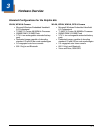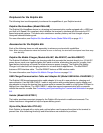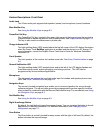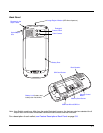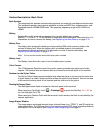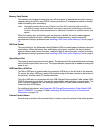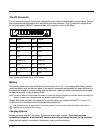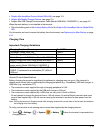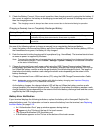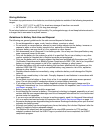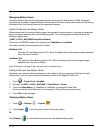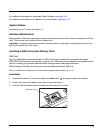
3 - 8
Feature Descriptions: Back Panel
Back Speaker
The integrated rear speaker sounds audio signals as you scan bar code labels and enter data.
The integrated speaker also supports playback of wave and MP3 files, software mixer, and
Speakerphone for WWAN/GSM audio. The operating frequency range is 600-3000Hz at
>90dB.
Battery
Dolphin 60s model terminals are designed for use with battery part number
60s-BATT-1 (Li-ion 3.7 V, 12.358 watt hour) manufactured for Honeywell International Inc. For
information on how to remove the battery, see Replacing the Main Battery on page 2-12.
Battery Door
The battery door protects the battery and any installed SIM and/or memory cards in the
terminal’s battery well. When the battery door is installed properly, the terminal’s
environmental rating is preserved. For information on how to remove the battery, see
Replacing the Main Battery on page 2-12.
Note: Do not use the terminal without the battery door installed.
Battery Lock
The Battery Lock allows the user to lock the battery door in place.
Color Camera
The 5.0-Megapixel Resolution auto-focus color camera provides easy picture and video
capture. The camera lens and camera flash are located on the back panel of the terminal.
Fastener for the Stylus Tether
The Stylus Tether helps prevent accidental loss when the stylus is not stored in the stylus slot.
A stylus tether is a coiled, elastic cord that tethers the stylus to the terminal. Secure one end
of the cord to the back panel of the terminal and the other end to the stylus.
Flashlight/Camera Flash
The flashlight/camera flash is located on the back panel of the terminal.
When used as a Flashlight, touch
> Flashlight or press the Red Key > ,to
turn the flashlight On or Off.
When used as a Camera Flash with the terminal’s color camera, the flash is controlled by the
camera application.
Image Engine Window
The image engine reads and decodes linear, stacked linear (e.g., PDF417), and 2D matrix bar
code symbologies. The LED aperture for the imaging engine’s LED aimer is contained behind
this window. For more details, see Using the Scan Image Engine on page 4-1.




